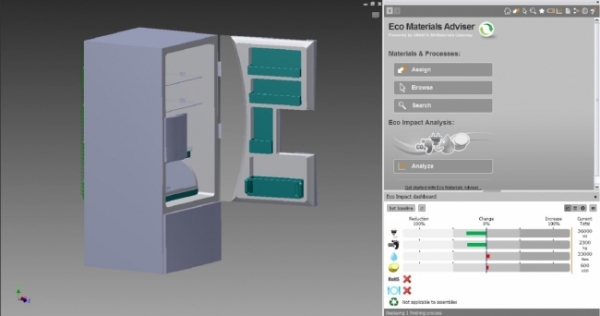You are here
Physical Properties of Materials
To select greener materials you need to consider the material’s environmental, cost, and performance impacts on your design. A material’s performance depends on its physical properties, and optimizing this is the most important way to reduce your product’s environmental impact.
Energy use often causes the biggest environmental impact for products that consume much energy during their use, like refrigerators and cars. Creating a lighter weight car can save far more energy than reducing the embodied energy of its materials. Likewise, to make a refrigerator or building more energy efficient, you’ll need to have good insulation and optimize heat transfer.
Tools to Identify Physical Properties of Materials
The Eco-Materials Adviser within Autodesk Inventor includes a materials database that is searchable by properties such as strength, stiffness, density, price, and thermal conductivity. Conducting this type of analysis on physical properties of is part of the overall Eco Materials Adviser recommended workflow.
Students and educators can download Autodesk Inventor and other Autodesk software free of charge in the Autodesk Education Community Download Center.
Granta’s CES Selector tool is a more full-featured material selection tool that allows materials to be compared with Ashby Diagrams.
| Attachment | Size |
|---|---|
| 436.39 KB | |
| 5.36 MB | |
| 24.6 MB |
Dive Deeper
Metrics and the Basics of Mechanics
To really understand simulation results, you need a solid understanding the following basic metrics that the software considers: force, torque, pressure, stress, etc.Links and References
- Free online resource for physical and mechanical data on all major material categories.




